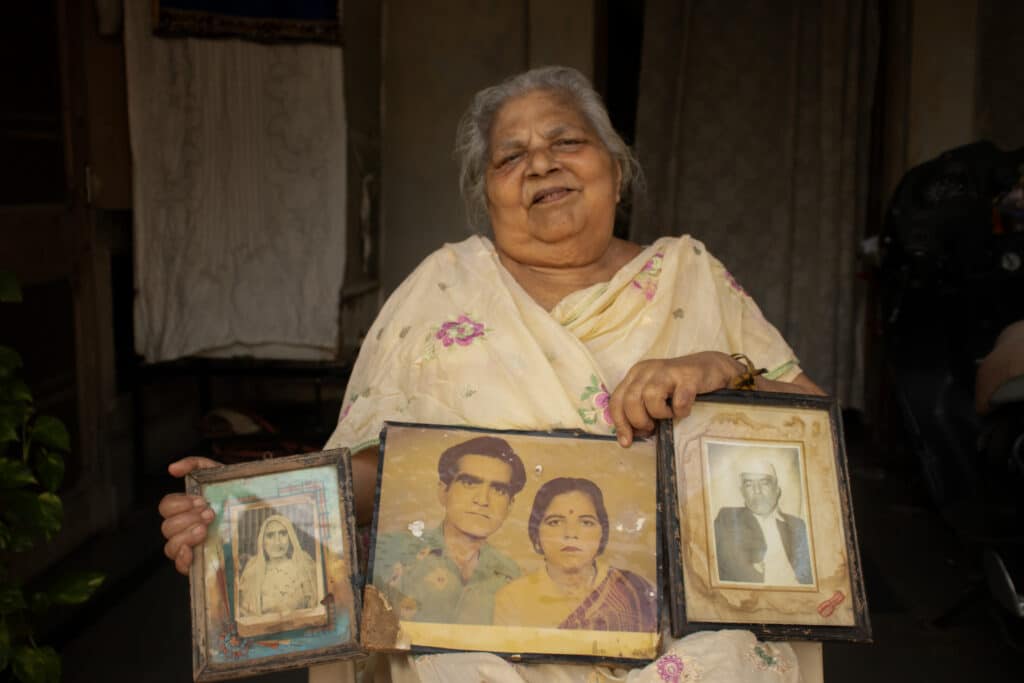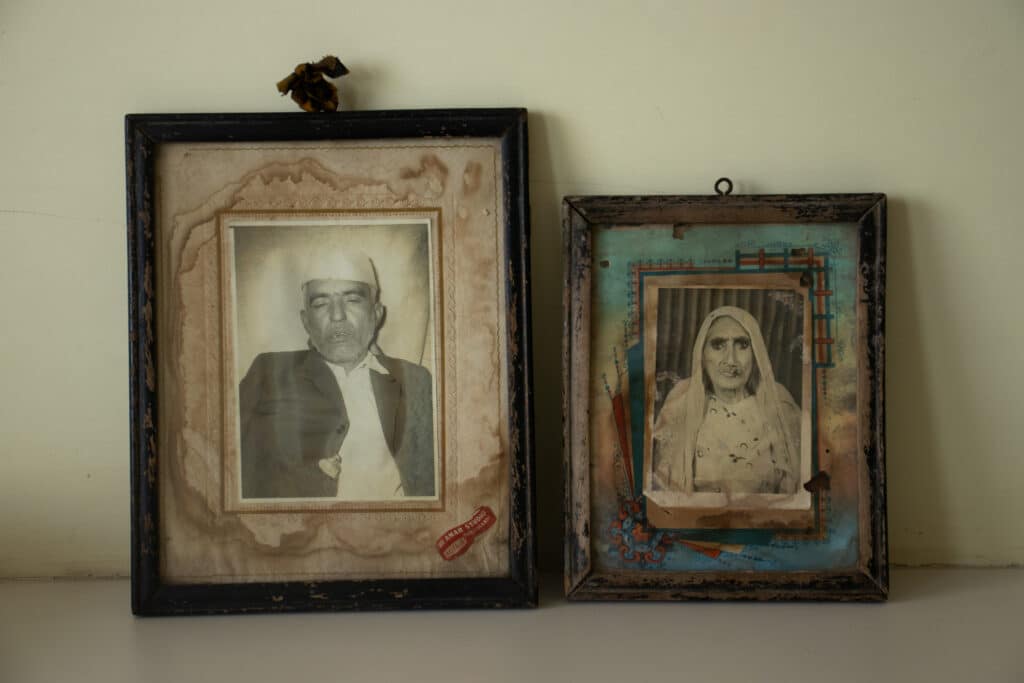TEXT AND PHOTOGRAPHS BY MAHAK SHIWANI
Rajasthan, India
This pot or Sipri, as it is known in Sindhi, belonged to my great-great-grandmother, Chaturbai. She was born into a Hindu Sindhi family and married somewhere in the 1890s, at around 15 years old, to my great-great-grandfather, Budharmal Shivani. The metal pot was given to her by her parents on the occasion of her wedding. But it could date to even earlier, as my grandmother is unsure of whether Chaturbai’s family had it before her marriage, or if they acquired it at that time.
Weighing 565 gms, 16 inches wide with a 4.5-inch opening at the mouth, its strong brass build made it durable and helped retain heat, which was important in village kitchens where meals were cooked slowly over open flames. I often wonder what Chaturbai must have cooked in this. Given how small it is, it could have been used to prepare special dishes or maybe even to serve food during family gatherings. Mostly though, it is incredible to think about the meals it once held and the history it has witnessed for over a century.

Chaturbai and Budharmal had five children – four sons, Girdharimal, Rinjamal, Namamal, Sahjumal and one daughter, Keematbai. They were all born in the family’s native village, Bangla, near Khairpur, Sindh, present day Pakistan. Each of them was also married in Khairpur, except Sahjumal. Somewhere in the early 1900s, when my great-grandfather, Girdharmal was married to Kundanbai, this Sipri would be passed down to the couple.
Girdharimal and Kundanbai did not have children for 18 years of their marriage but eventually had a daughter, Heerabai and then three years later, a son, Sumamal, who would become my grandfather. The rest of their three children would be born in an independent India. During the Partition of 1947, the extended family boarded a train from Khairpur to Surajpole in Kota, Rajasthan. This brass Sipri was one of the things they carried with them to India, along with a few other kitchen utensils, some clothes and very little money.
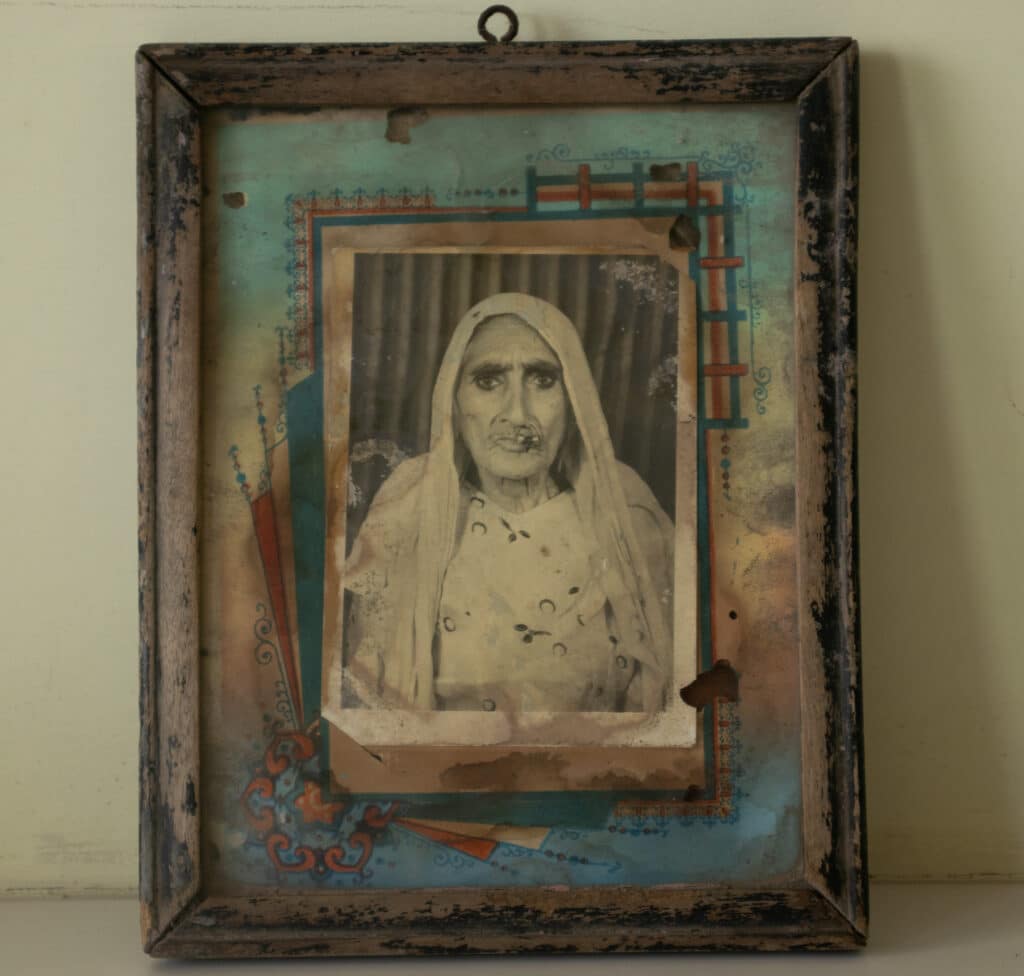
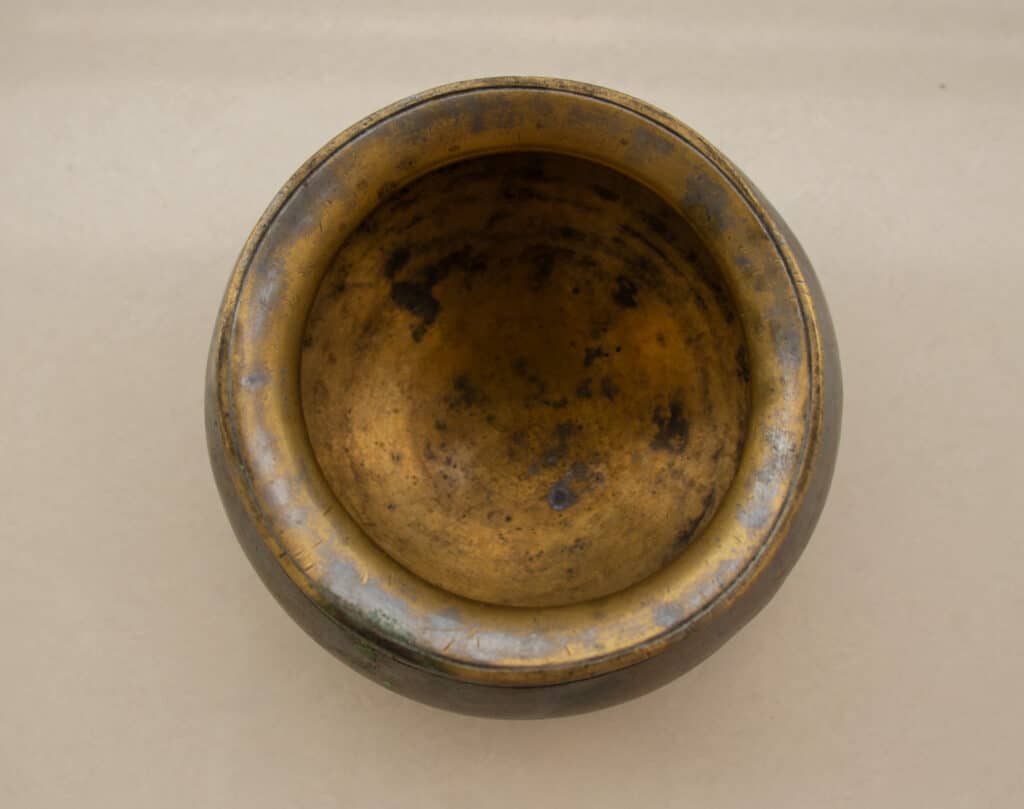
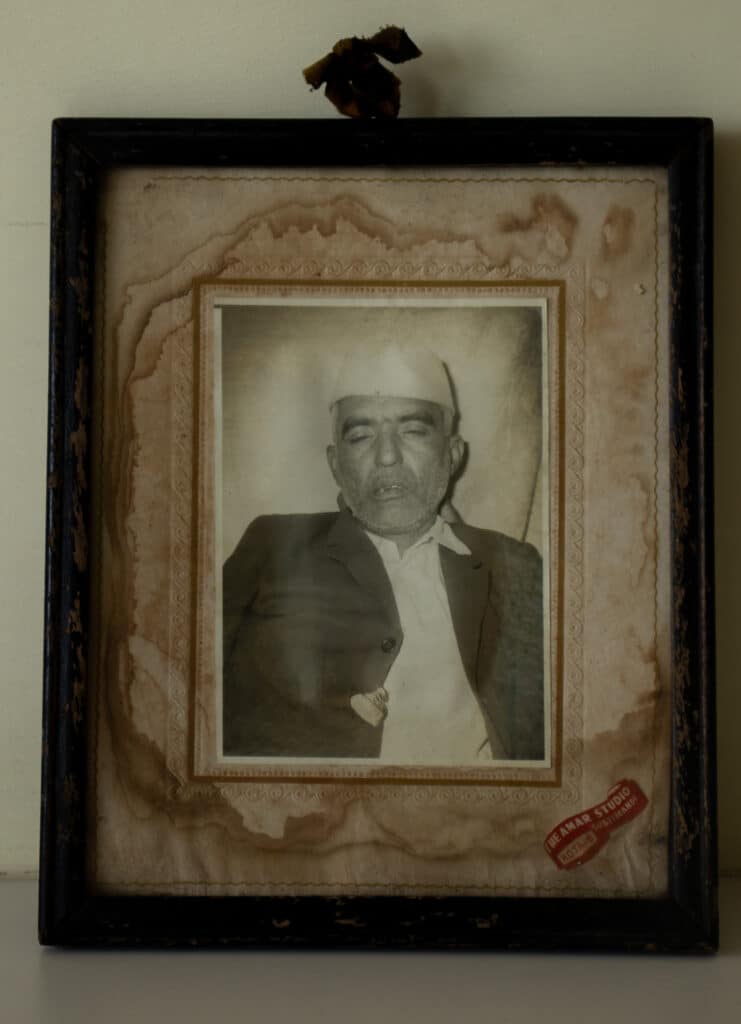
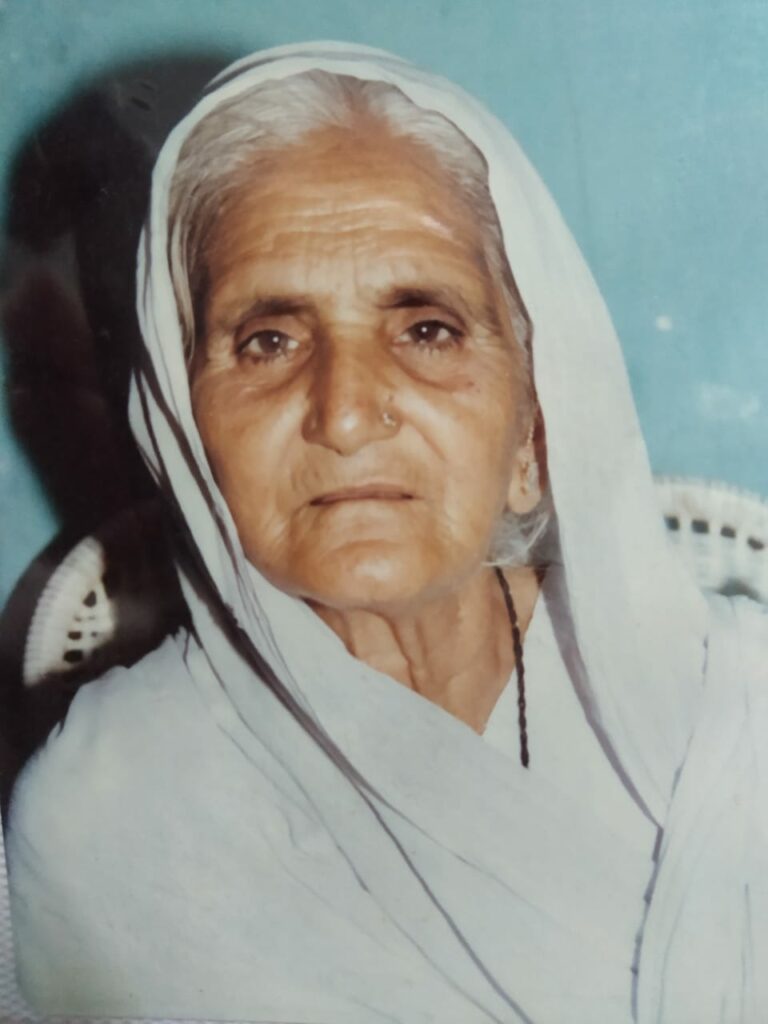
I wonder why this was one of the few utensils they chose to bring. Was it because it was an heirloom from a previous generation, rich with emotional resonance and history? Or perhaps it held practical value, used every day in the kitchen, making it too essential to leave behind. Maybe it symbolized more than just its function—a reminder of home, of tradition, and of an entire life that would now only exist in memory.
Soon Girdharimal and Kundanbai moved to Sangod, a village a few kilometers from Kota, and set up a general store, while the generation before them continued to live in Kota. The Sipri remained with them until Kundanbai passed it down to my grandmother, Meeradevi, who has narrated these family stories to me. She was engaged at 16 and married at 18 in the year 1966, to my grandfather, Sumamal in Kota. The couple had an arranged marriage as both their fathers knew each other well, but my grandparents only met for the first time on their own wedding day!
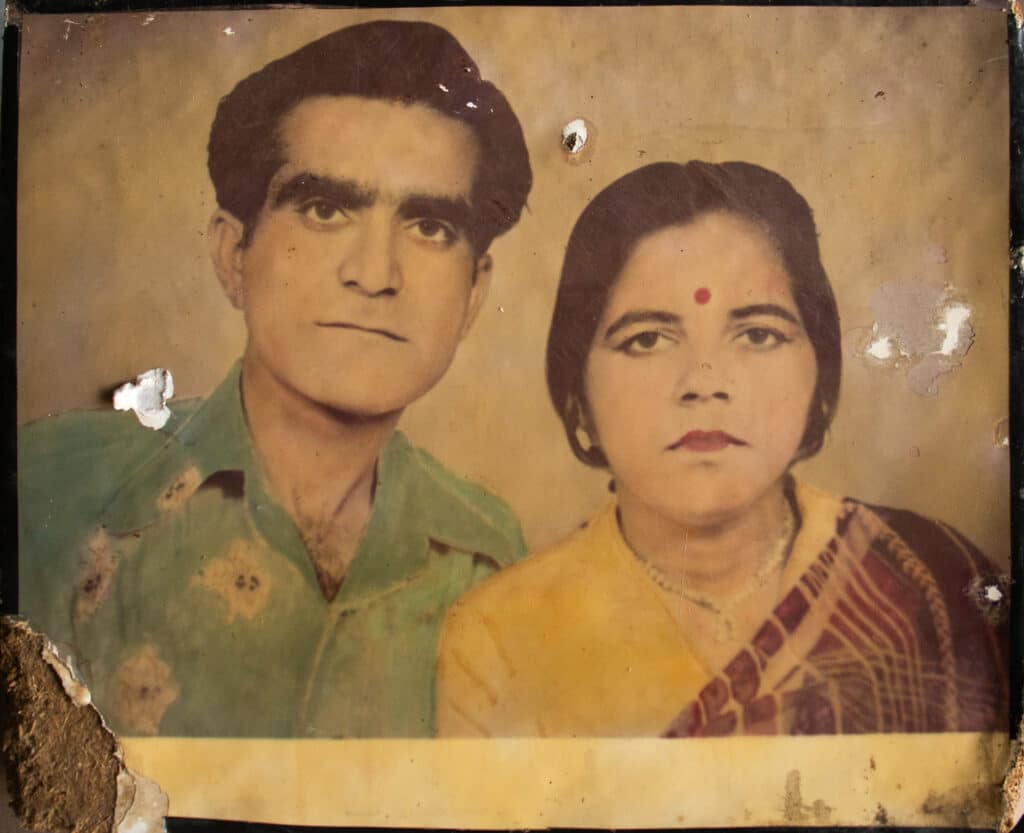
Life in Sangod was tough, without running water or electricity. My grandmother recalls having to go to the village well to fill up water at very specific times of the day, because being the only Sindhi family in the village, they were often discriminated against and labelled as “Pakistanis”. With only one pakka room in the house, they would cook their food outside on a sigri, a stove that used coal, dung and wood as fuel for cooking, and this is when she was introduced to this Sipri for the first time. Since childhood, she’d been very fond of small utensils, and while her mother-in-law used it to cook potatoes, carrots, or simply reheat the food, my grandmother would use it to cook daliya or food required only in smaller portions. Even though life was difficult, she cherishes the time spent with her husband, and appreciates all the things her mother-in-law taught her in those simple and slow years.
They returned to Kota in 1975 after my aunt was born. My grandmother was an expert in stitching and embroidery, and to overcome a financially stressful time, began to teach these skills to some of the neighbourhood girls to contribute to the family income. Now 76 years old, she still spends her time stitching on her old sewing machine. Meanwhile, Chaturbai lived till the ripe age of 103 years, and I hope she had a fulfilling life. While the exact date of her death is not known, my grandmother suspects that both she and her husband, Girdharimal, passed away in the 1970s, and Kundanbai in 1998. After their time, this Sipri came into the full-time care of my grandmother, and she continued to use it on the sigri stove, just as the generations of women before her had done.
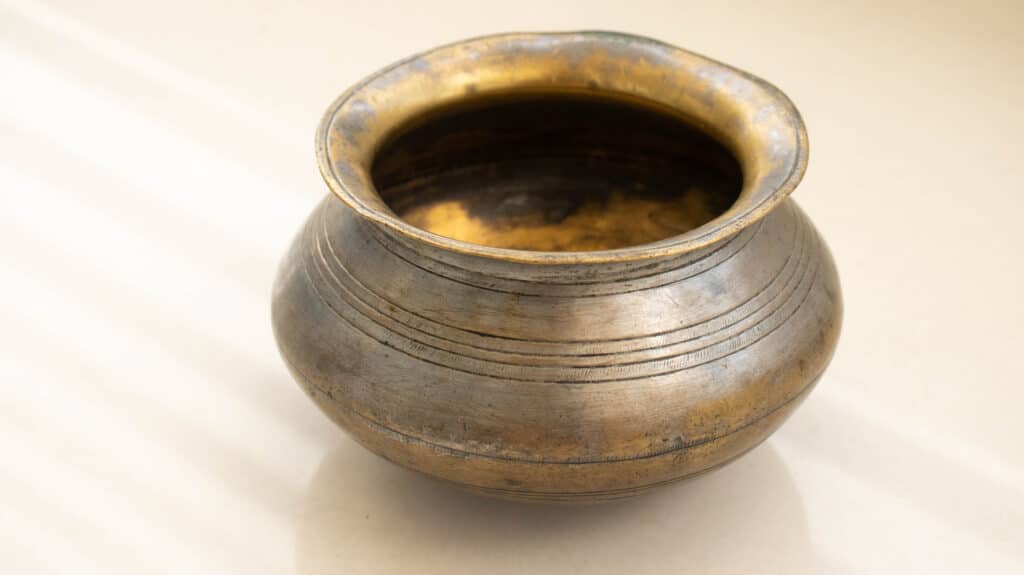
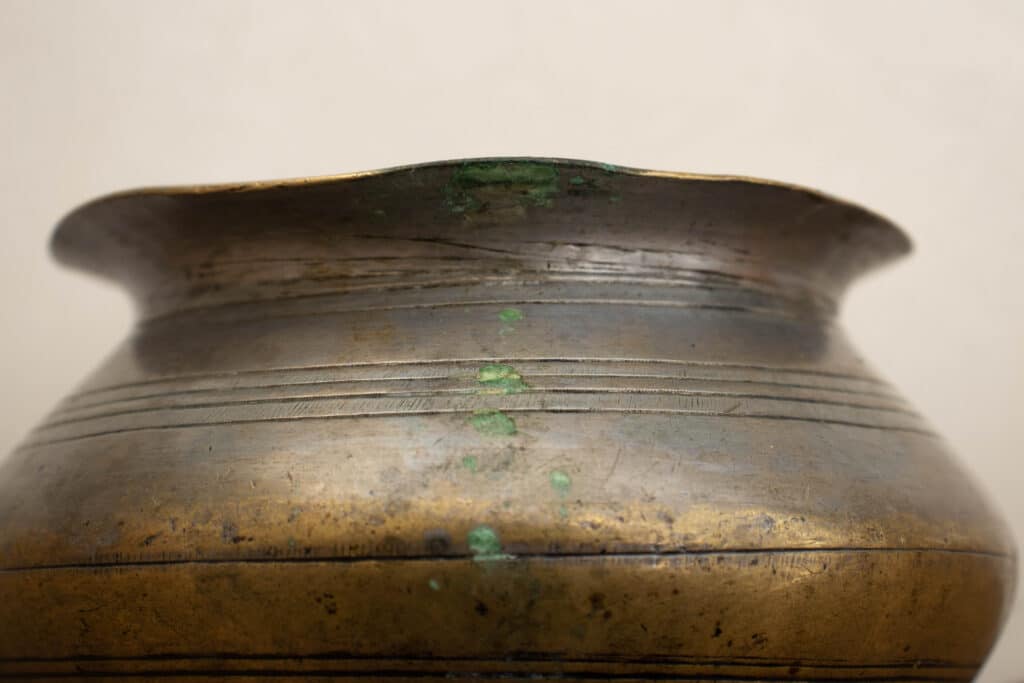
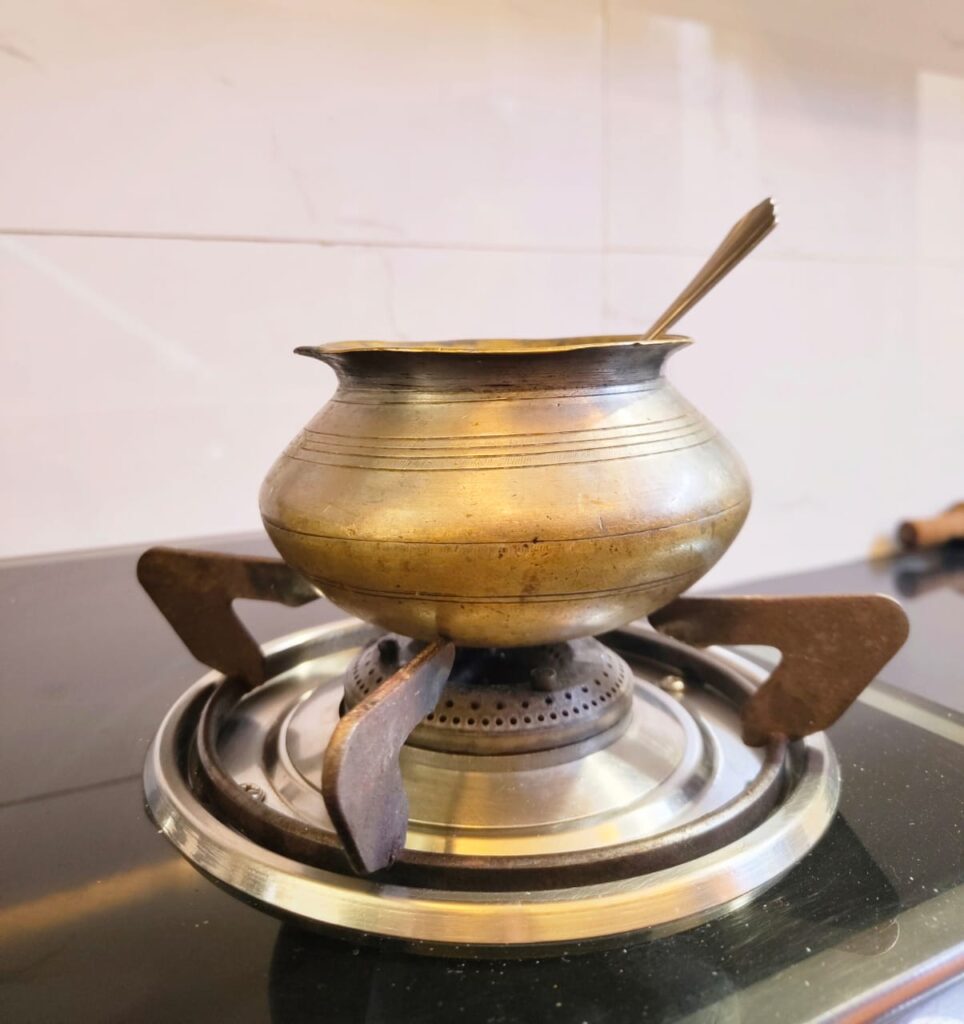
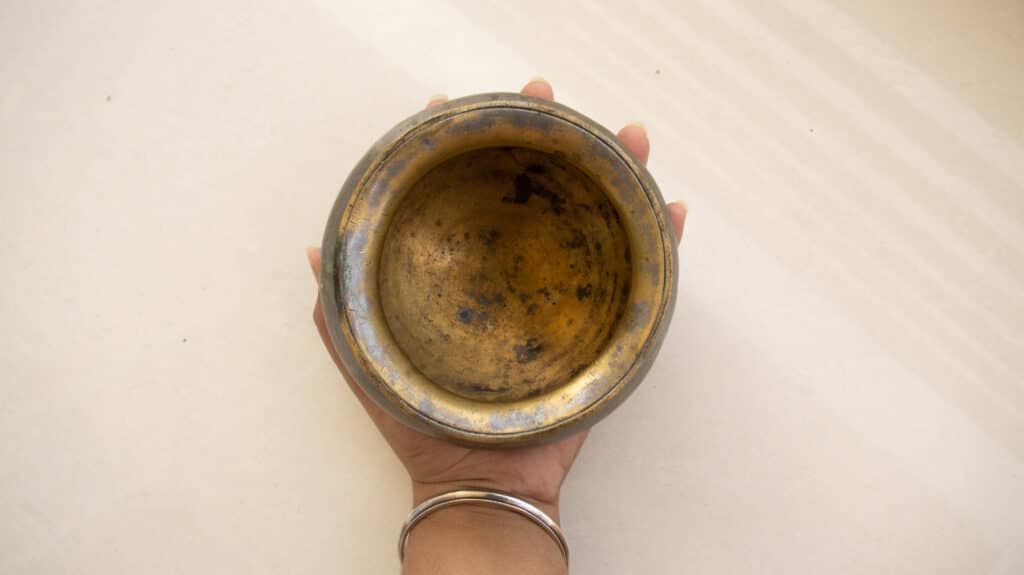
I remember my grandmother telling me the story of this family heirloom several months ago, but it was only a few weeks earlier that I asked to see Sipri and she took it out from the bottom shelf of her cupboard. My eyes lit up as soon as I saw this object from over a century ago, slight green marks of oxidation on its surface, but still in great condition. And for me, it is these gentle marks of wear and use that tell the tale of my family.
The Sipri was last polished in the early 2000s and since then it has not been altered. This heirloom brings me a sense of comfort and happiness. It often makes me wonder of the life they lived, how it has managed to survive Partition and several migrations since, how it crossed borders, was passed down through generations, and now rests with me. And even though I don’t cook in it, I still keep it in my kitchen as a reminder of my family’s past. It is more than just an old pot, for everytime I see it, I’m reminded of where we came from, and it gives me a sense of connection and belonging. Even though I am miles and countries apart from where Chaturbai and her family once lived in Khairpur, the heritage of the place they called home continues to live on through this antique Sipri, no matter the physical distance.
